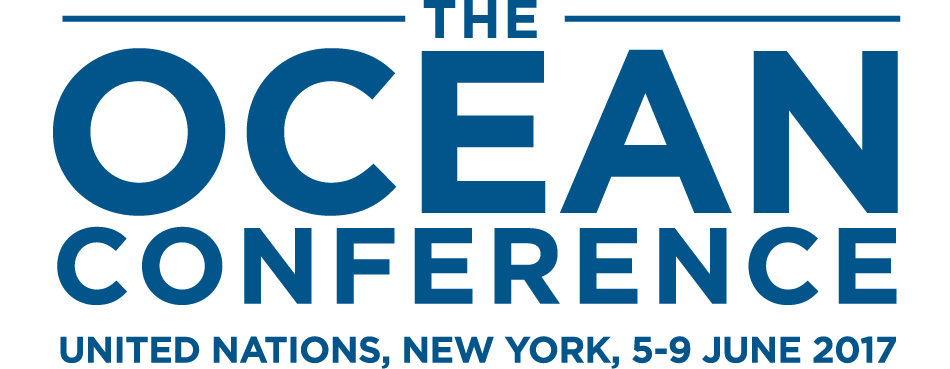Curtain raiser
13th Session of the Conference of the Parties to the UNCCD (COP 13)
The thirteenth session of the Conference of the Parties to the UN Convention to Combat Desertification (UNCCD COP 13) convenes on Wednesday in Ordos, Inner Mongolia, China, and will continue until 16 September 2017. The meeting includes the sixteenth session of the Committee for the Review of the Implementation of the Convention (CRIC 16), and the thirteenth session of the Committee on Science and Technology (CST 13), as well as a high-level segment scheduled for 11 and 12 September 2017. Special segments will include: three parallel high-level roundtable discussions on land degradation, drought and dust storms, and land degradation neutrality (LDN); a dialogue with civil society on gender and land rights; a dialogue with elected and local government representatives on the role of local governments in addressing the challenges of land degradation; and a dialogue with the private sector on its role in achieving LDN.
A BRIEF HISTORY OF THE UNCCD
The UNCCD is the centerpiece in the international community’s efforts to combat desertification and land degradation in the drylands. The Convention was adopted on 17 June 1994, entered into force on 26 December 1996, and currently has 195 parties. The UNCCD recognizes the physical, biological and socio-economic aspects of desertification, the importance of redirecting technology transfer to be demand-driven, and the importance of involving local communities in combating desertification, land degradation and drought (DLDD). The core of the UNCCD is the development of national, sub-regional and regional action programmes by national governments, in cooperation with UN agencies, donors, local communities and non-governmental organizations. The UNCCD originally contained four regional implementation annexes for Africa, Asia, Latin America and the Caribbean, and the Northern Mediterranean.
COPs 1-12: The COP met annually from 1997-2001. During these meetings, delegates, inter alia: selected Bonn, Germany, as the location for the UNCCD’s Secretariat and the International Fund for Agricultural Development (IFAD) as the organization to administer the Global Mechanism (GM), which works with countries on financing strategies for sustainable land management (SLM); approved a Memorandum of Understanding regarding the GM; established an ad hoc working group to review and analyze reports on national, sub-regional and regional action programmes; adopted a fifth regional annex for Central and Eastern Europe; established the CRIC; and supported a proposal by the Global Environment Facility (GEF) to designate land degradation as a focal area for funding.
COP 8 convened in 2007, in Madrid, Spain, and, inter alia, adopted a decision on the 10-year strategic plan and framework to enhance the implementation of the Convention (“The Strategy”). Delegates also requested the UN Joint Inspection Unit (JIU) to conduct an assessment of the GM for presentation to COP 9. Delegates did not reach agreement on the programme and budget, and an Extraordinary Session of the COP convened at UN Headquarters in New York on 26 November 2007 to conclude this item.
COP 9 convened in 2009, in Buenos Aires, Argentina. Delegates focused on items called for by the Strategy and adopted 36 decisions, including on: four-year work plans and two-year work programmes of the CRIC, CST, GM and Secretariat; the JIU assessment of the GM; the terms of reference of the CRIC; arrangements for regional coordination mechanisms; the communication strategy; and the programme and budget.
COP 10 convened in 2011, in Changwon City, Republic of Korea. Delegates adopted 40 decisions, addressing, inter alia, the governance structure for the GM, by which parties agreed that the accountability and legal representation of the GM shall be transferred from IFAD to the UNCCD Secretariat.
COP 11 convened in 2013, in Windhoek, Namibia. Delegates adopted 41 decisions, inter alia, to: approve new housing arrangements of the GM; initiate follow-up of the outcomes of the UN Conference on Sustainable Development (Rio+20); establish a Science-Policy Interface (SPI) to enhance the UNCCD as a global authority on DLDD and SLM; and endorse the establishment of the Scientific Knowledge Brokering Portal (SKBP).
COP 12 convened in 2015, in Ankara, Turkey. Delegates adopted 35 decisions, following deliberations on DLDD, including how to pursue the target to achieve LDN; and how to align the UNCCD’s goals and parties’ action programmes with the recently adopted Sustainable Development Goals (SDGs).
CRIC: The CRIC held its first session in Rome, Italy, in 2002, during which delegates considered presentations from the five UNCCD regions, and considered information on financial mechanisms in support of the UNCCD’s implementation and advice provided by the CST and the GM. From 2003 to 2010, the CRIC tackled a number of issues, including reviewing implementation of the UNCCD, its institutional arrangements, and implementation financing by multilateral agencies and institutions, improving communication and reporting procedures, mobilizing resources for implementation, and collaborating with the GEF. The CRIC also considered: the workplans and programmes for the Convention’s bodies; indicators and monitoring the Strategy; principles for improving communication of information; and recommended adoption of the proposal for an online Performance Review and Assessment of Implementation System (PRAIS).
CRIC 10 (2011) discussed the strategic orientation of the Convention’s institutions and subsidiary bodies, adopted four operational objectives to assess the implementation of the Convention against performance indicators, and approved an iterative process on reporting procedures and the refinement of methodologies for the review and compilation of best practices.
CRIC 11 (2013) reviewed progress in alignment of national action programmes (NAPs) with the Strategy, considered input from the Intersessional Working Group for the Mid-term Evaluation of the Strategy and the Ad Hoc Advisory Group of Technical Experts on “operationally delineating affected areas,” and took note of the input from the third special session of the CST (CST S-3) on how best to measure progress in the implementation of the Strategy.
CRIC 12 (2013) approved 12 decisions, including on: best practices in the implementation of the Convention; UNCCD’s interaction with the GEF; multi-year workplans of the Convention’s institutions and subsidiary bodies; assessment of financial flows for implementation; and assessment of the implementation of the Convention against strategic objectives 1, 2 and 3, and against the operational objectives of the Strategy.
CRIC 13 (2015) assessed the Convention’s implementation against its five operational objectives: advocacy, awareness-raising and education; policy framework; science, technology and knowledge; capacity building; and financing and technology transfer. The CRIC also reviewed financial support for the implementation of the Convention, and the formulation, revision and implementation of action programmes in view of the post-2015 sustainable development framework.
CRIC 14 (2015) developed eight decisions, regarding, inter alia: collaboration with the GEF; establishment of national-level voluntary LDN targets within NAPs and national reports, including funding to support national target-setting towards achieving LDN; and a results framework with which the CST, CRIC, GM and the Secretariat will organize their work for the period 2016-2019.
CRIC 15 (2016) considered arrangements for a new strategic framework, including its corresponding monitoring and reporting guidelines, to succeed the Strategy after 2018. Recommendations to COP 13 included: the strategic objectives and expected impacts; the implementation framework, including funding for the strategy; the roles of the CRIC and CST, as well as the UNCCD Secretariat and GM; and monitoring, reporting and evaluation arrangements.
CST: The CST has convened parallel meetings at each COP. At CST 1’s recommendation, the COP established an ad hoc panel to oversee the process of surveying benchmarks and indicators, and decided that CST 2 should consider linkages between traditional and modern knowledge. The CST also recommended that the COP appoint ad hoc panels on traditional knowledge and on early warning systems; create a Group of Experts; and, at CST 8, convene future sessions in a predominantly scientific and technical conference-style format, which led to the convening of the UNCCD 1st Scientific Conference at CST 9 in 2009.
The first CST special session (S-1, 2008) considered preparations for CST 9, elements of the Strategy related to the CST, its workplan, and advice to the CRIC on measuring progress on the Strategy’s Objectives. CST 9 met concurrently with COP 9, during which the 1st Scientific Conference convened to consider the theme “Biophysical and socio-economic monitoring and assessment of desertification and land degradation, to support decision making in land and water management.” CST 9 also developed decisions to review the experience of the 1st Scientific Conference and recommended two indicators—the proportion of the population in affected areas living above the poverty line, and land cover status—as the minimum required subset of impact indicators for reporting by affected countries beginning in 2012.
CST S-2 (2011) considered the status of work on methodologies and baselines for the effective use of the subset of impact indicators, among other matters. CST 10 established two ad hoc working groups: one to continue the iterative participatory process on impact indicator refinement and monitoring and assessment of impacts; and one to further discuss options for the provision of scientific advice to the UNCCD.
CST S-3 (2013) met concurrently with the UNCCD 2nd Scientific Conference, which discussed research and best practices in the face of DLDD and proposed methodologies for evaluating the costs and benefits of SLM. CST 11 (2013) forwarded decisions to the COP recommending, inter alia, the establishment of the SPI and the SKBP and the establishment of ad hoc working groups on the iterative participatory process on impact indicator refinement and monitoring, and options for providing scientific advice to the UNCCD.
CST S-4 (2015) and the UNCCD 3rd Scientific Conference convened concurrently, and addressed the theme “Combating desertification/land degradation and drought for poverty reduction and sustainable development: the contribution of science, technology, traditional knowledge and practices.” CST 12 (2015) met concurrently with COP 12 and discussed a policy-oriented proposal based on the outcomes of the UNCCD 3rd Scientific Conference; options for improving the CST inputs to decision making; and proposals for the use of land-based indicators across the Rio conventions. The CST further adopted its work programme for 2016-2017, including tackling issues related to LDN, the restoration of degraded lands, and the role of SLM in addressing DLDD, climate change mitigation and adaptation.
INTERSESSIONAL HIGHLIGHTS
The Caux Dialogue on Land and Security (CDLS): This annual event, jointly convened by the UNCCD Secretariat, the International Union for Conservation of Nature (IUCN), the Caux-Initiatives of Change Foundation (IofC), and the Initiatives for Land, Lives and Peace (ILLP), during its 2017 gathering released a seven-point communiqué, emphasizing land restoration as central to implementing the SDGs and the Paris Agreement on climate change, and calling for scaling up land restoration efforts around the world to achieve LDN by 2030.
The 45th session of the Intergovernmental Panel on Climate Change (IPCC-45): Delegates agreed to the outline of the special report, “Climate Change and Land: An IPCC special report on climate change, desertification, land degradation, sustainable land management, food security, and greenhouse gas fluxes in terrestrial ecosystems,” with a proposed approval date of September 2019.
The Intergovernmental Science-Policy Platform on Biodiversity and Ecosystem Services (IPBES): The third IPBES Plenary session in 2015 approved the launch of the land degradation and restoration assessment with an agreed scope, including: to cover the global status of and trends in land degradation, by region and land cover type; the effect of degradation on biodiversity values, ecosystem services and human well-being; and the state of knowledge, by region and land cover type, of ecosystem restoration extent and options.
-->
Specific funding for coverage of the Ocean Conference - June 2017, has been provided by the
XXX, XXX, and XXX
-->
IISD Reporting Services is a division of the International Institute for Sustainable Development (IISD).
Earth Negotiations Bulletin (ENB), ENB+, and Knowledge Management for Sustainable Development
are branches within IISD Reporting Services.
© 1992-2017, IISD Reporting Services. All rights reserved.







